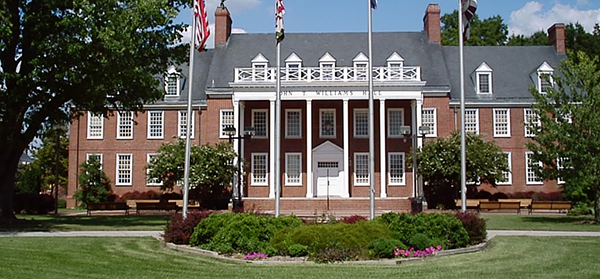After Hours of Testimony, Board of Public Works Approves Eastern Shore Pipeline Permit

The Maryland Board of Public Works on Wednesday unanimously approved a critical permit for a controversial Eastern Shore pipeline project that would extend natural gas to Somerset County, with the University of Maryland Eastern Shore and the Eastern Correctional Institute as its two main beneficiaries.
The wetlands permit for the second part of the pipeline project will go before the Board of Public Works for a vote in the future.
Supporters of the pipeline pointed to the economic injustice that Somerset County has faced for decades as one of the three counties in the state that does not have access to natural gas. The county, which is 41% Black and the poorest county in the state, has lost out on many economic opportunities because of this, local leaders told Board of Public Works members.
“We desperately need this opportunity,” implored Craig Mathies, president of the Somerset County Commissioners. “We’re not looking for a hand-out. We’re just looking for a hand to advance the opportunity for our citizens to become self-sufficient and have a better means of supporting their families and enjoy a better standard of life.”
On the other hand, environmental advocates pointed to the environmental injustice of the pipeline, which will run through majority minority and low-income communities that could be exposed to any detrimental leaks or damages from the pipeline.
Sen. Stephen S. Hershey Jr. (R-Caroline) pushed back on this claim, arguing that residents may not have been beset with poverty if they had the proper infrastructure critical to economic development.
“Maybe the reason [residents] are poor is because they don’t have the infrastructure in place to bring businesses into Somerset County,” Hershey said in an interview with Maryland Matters. “So let’s look at bringing this type of infrastructure and see if we can create jobs as a result of that and then maybe that’s the best way to lift people out of poverty.”
Currently, the University of Maryland Eastern Shore uses fuel-oil and propane, while the Eastern Correctional Institute burns wood chips, both of which are dirtier sources of energy that natural gas can replace, local advocates emphasized. Not only would natural gas be a more cost-effective energy source, but it would also help reduce carbon dioxide emissions by 38% at UMES and 65% in ECI.
Support of this natural gas pipeline and support for renewable energy sources are not mutually exclusive, local advocates said. Sen. Mary Beth Carozza (R-Somerset), pointed to other alternative energy projects that UMES has invested in, such as a 2.2 mega-watt solar farm that contributes to 12% of the campus’s energy consumption and a geothermal system in two campus buildings.
Lt. Gov. Boyd K. Rutherford (R), who chaired the meeting in place of Gov. Lawrence J. Hogan Jr. (R), also noted that Somerset County also has one of the highest asthma rates in the state, so it would be unjust to deny residents a cleaner energy source and let them continue to breathe dirty air until a renewable energy plan works out.
Opponents further argued that investing in a natural gas infrastructure is a short-sighted decision, predicting that the pipeline would become obsolete within the next decade as the renewable energy industry gains speed.
Even if the use of natural gas does diminish in the next few decades, public officials are nevertheless responsible for helping Somerset County residents grow economically, especially in light of the COVID-19 pandemic, supporters said.
Rutherford highlighted that most of the opponents were from areas of the state that have natural gas and thus were speaking from a point of privilege.
“What a number of these people are doing is denying the choice of the residents and the business…in the poorest community in the state,” Rutherford said. “It goes to the elitism of people who live in an area where they can make choices that are trying to make choices for people who don’t.”
Although Comptroller Peter V.R. Franchot (D) initially lambasted the board’s narrow authority to consider only the impacts on the tidal wetlands that the pipeline would go through, he concluded at the end of three hours of public testimony that requiring a dramatic shift solely to renewable energy may not be productive or fair for Somerset County.
“The fact that Somerset County has not had access to natural gas is quite frankly an economic injustice to residents that live there,” Franchot said. He mentioned that the Great Bay wind project that was planned for Somerset County in 2014 but failed as it hit political obstacles in the General Assembly.
“The folks in Somerset need something now, not five years from now,” Franchot continued. “I strongly believe that this project will be somewhat of an immediately beneficial help to the environment by lowering emissions from the university and prison significantly, all the while adding only a small amount to the state’s natural gas use.”
State Treasurer Nancy K. Kopp (D) said that the pipeline could be seen as a “bridge” towards renewable energy and should not be used longer than necessary. She highlighted that the state’s goal of at least 40% greenhouse gas emission reduction by 2030 cannot be achieved with natural gas.
Franchot also emphasized that this vote should not be seen as an endorsement for fossil fuels or preclude development of renewable energy in Somerset County. Rather, it is a “temporary measure and must be treated as such.”




 Creative Commons Attribution
Creative Commons Attribution